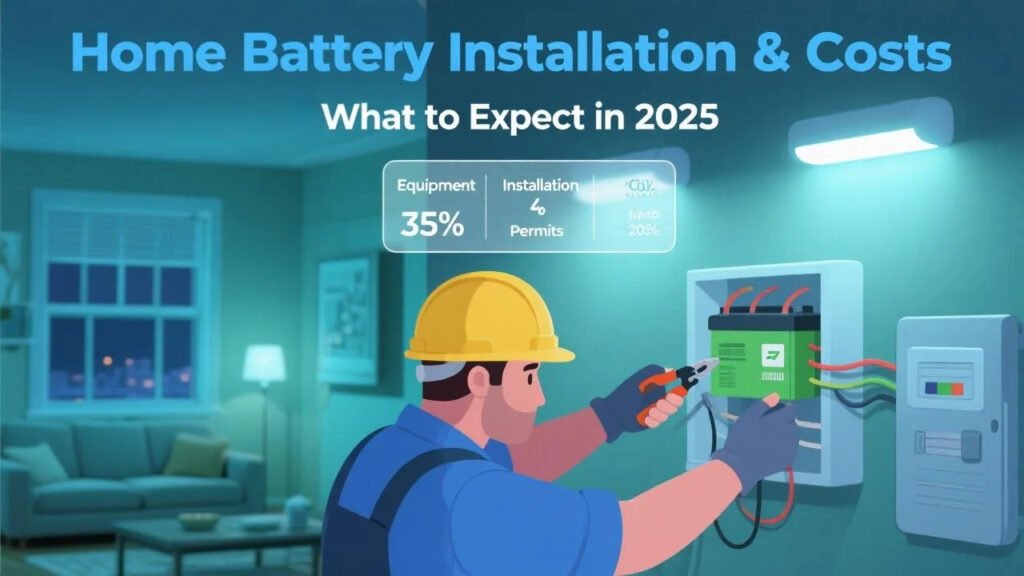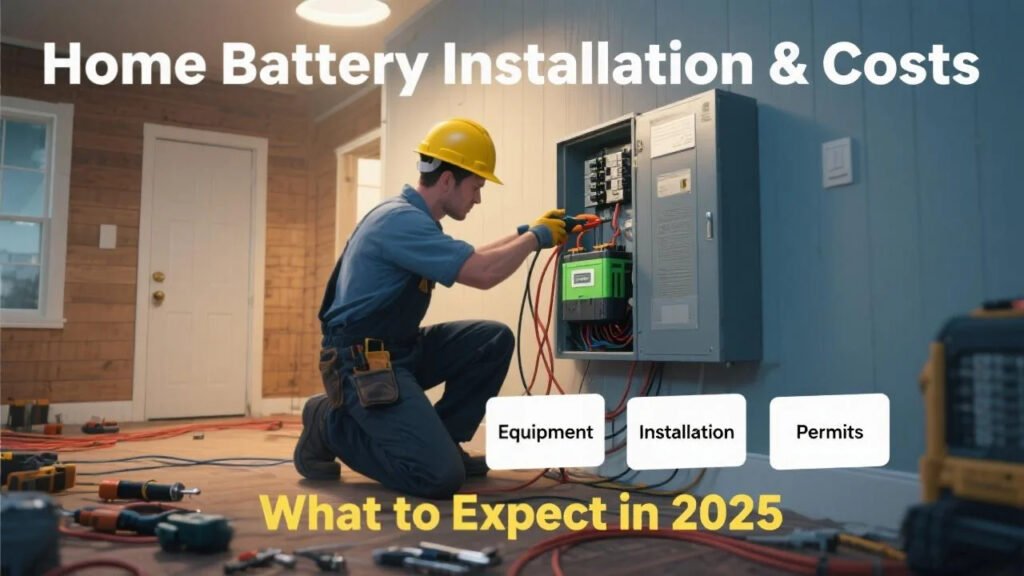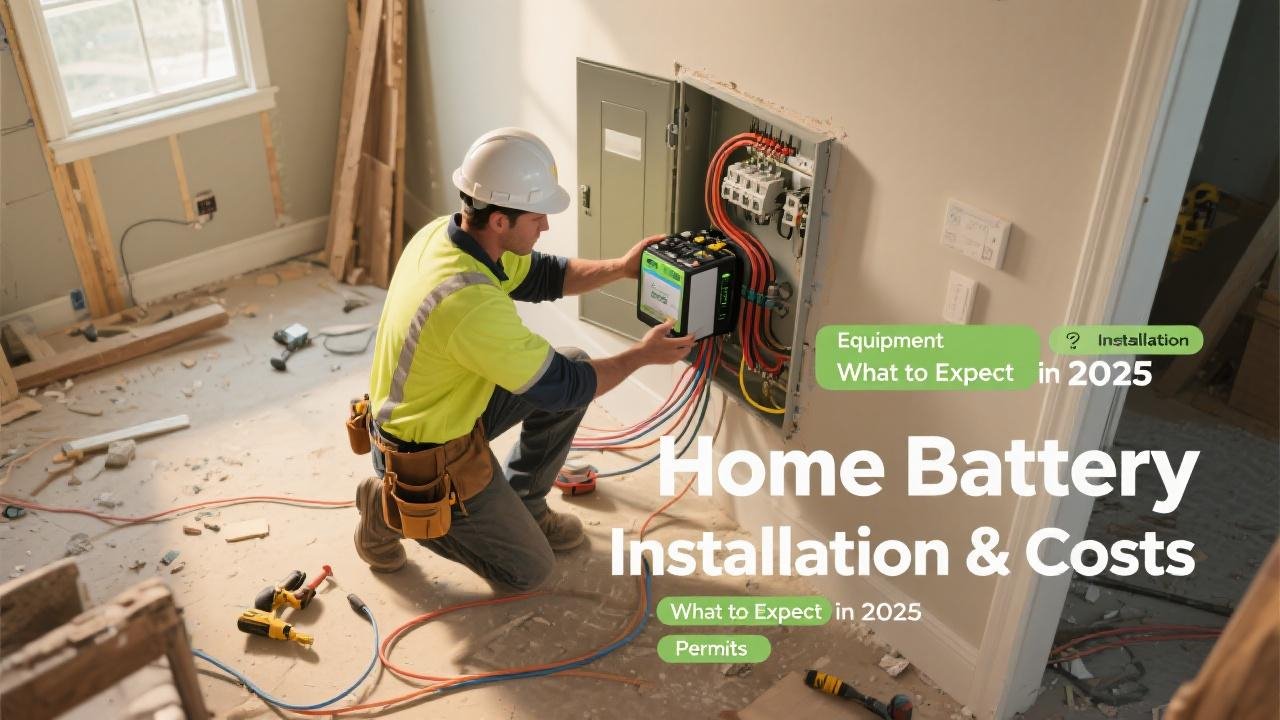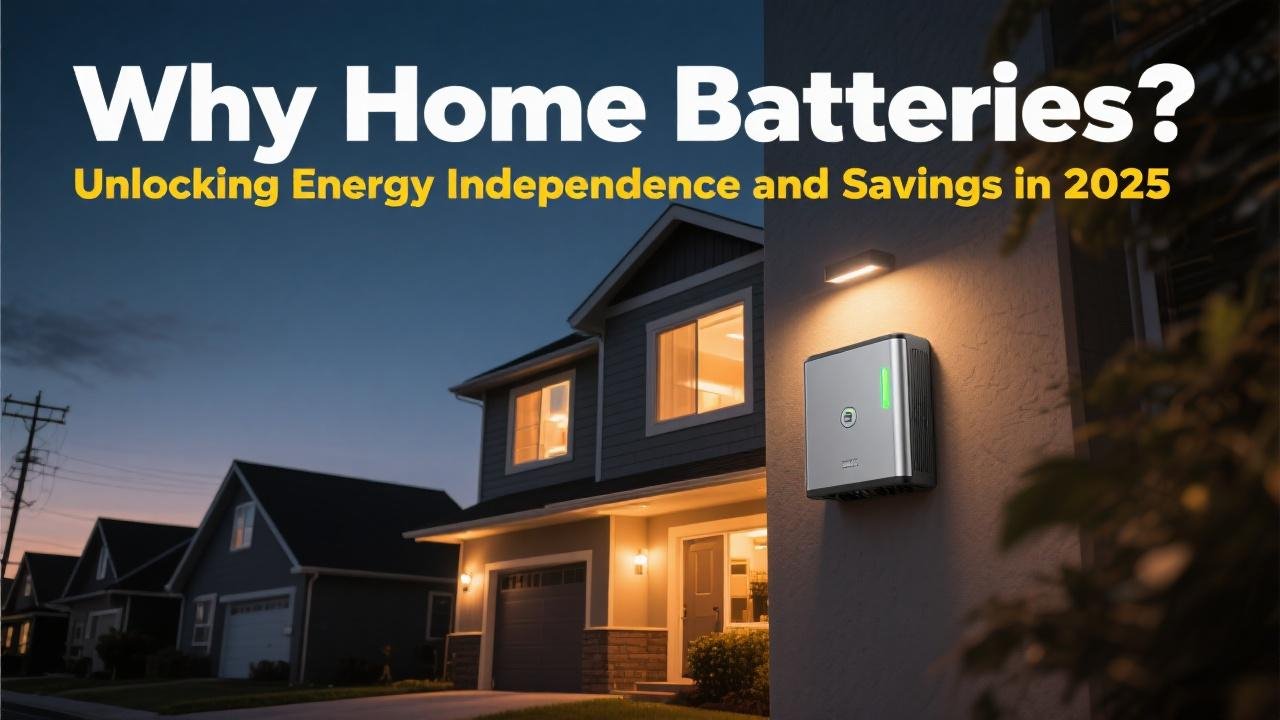Introduction: Powering Up Your Home with Battery Storage
You’ve decided to enhance your home’s energy system with battery storage – a smart move for energy independence, backup power, and maximizing your solar investment. Whether you’re pairing it with a new solar panel system or adding it to an existing one, understanding the installation process and associated costs is crucial. In 2025, while battery technology is more advanced and accessible, the installation is still a significant undertaking that requires professional expertise.
This guide will walk you through what to expect during a home battery installation, factors influencing costs, and how platforms like EnergySage can help you navigate this process smoothly.
Key Steps in a Home Battery Installation:
The installation of a home battery system, like a Tesla Powerwall, Enphase IQ Battery, or Bluetti EP900, involves several critical stages handled by qualified electricians and certified installers.
Site Assessment and System Design:
- Purpose: Similar to a solar panel installation, a thorough site assessment is needed. The installer will evaluate your existing electrical panel’s capacity, identify the best location for the battery unit(s) (often in a garage, utility room, or an exterior wall, depending on the battery’s NEMA rating for outdoor use ), and determine how it will integrate with your solar PV system (if applicable) and your home’s critical loads.
- Load Calculation: You’ll discuss which appliances and circuits you want to back up during an outage. This helps determine the battery size and the complexity of the wiring.
- Final Design: The installer will create a detailed design plan, including battery placement, wiring diagrams, and integration with any existing solar inverter or the installation of a new hybrid inverter.
Permitting and Utility Approval:
- Local Permits: Installing a home battery system requires electrical permits from your local city or county to ensure compliance with building codes, electrical codes (like the National Electric Code – NEC), and safety standards. Your installer will typically handle the permit application process.
- Utility Interconnection Agreement: If your battery will be grid-tied (most are, especially when paired with solar), you’ll need an interconnection agreement with your utility company. This process ensures your system can safely interact with the grid. This is often handled in conjunction with solar interconnection if installed together.
Equipment Delivery and Preparation:
- Once permits are approved, the battery system (battery units, inverter if separate, monitoring hardware, and associated electrical components) will be ordered and delivered.
- Your installer will coordinate the delivery and ensure all necessary components are on hand for installation day.
Installation Day(s):
- Mounting the Battery: The battery unit(s) will be securely mounted in the predetermined location. This might involve wall mounting or floor mounting, depending on the model.
- Electrical Wiring: This is the most complex part. Licensed electricians will:
- Connect the battery to your main electrical panel, often through a new sub-panel for backed-up loads.
- Integrate the battery with your solar PV system. This might involve connecting to your existing solar inverter or installing a new hybrid inverter that can manage both solar and battery.
- Install an automatic transfer switch (ATS) or a similar device that safely disconnects your home from the grid during an outage and allows the battery to power your designated circuits.
- Install any necessary disconnects and overcurrent protection devices.
- Setting up Monitoring: The installer will configure the battery’s monitoring system, which allows you (and often them) to track performance, charge levels, and energy flow via a web portal or mobile app.
- The duration of the physical installation can vary from a full day to two days, depending on system complexity and whether it’s part of a larger solar installation.
Inspection and Commissioning:
- Local Inspection: After the installation is complete, a local electrical inspector will examine the system to ensure it meets all code requirements and safety standards.
- Utility Inspection (if required): Some utilities may also conduct their own inspection before granting Permission to Operate (PTO).
- System Commissioning: Once all inspections are passed, the installer will formally commission the system. This involves testing its functionality, ensuring it charges and discharges correctly, and that the backup power feature works as intended. They should also walk you through its operation and monitoring.
Permission to Operate (PTO):
- Similar to solar PV systems, you’ll need official PTO from your utility company before your grid-tied battery system can be fully operational, especially for functions like exporting stored energy (if applicable under your tariff).

Understanding Home Battery Costs in 2025:
The cost of a home battery system in 2025 can vary significantly based on several factors. While CNET notes that solar batteries can range from $12,000 to $22,000, with smaller batteries (8 kWh or less) potentially under $10,000 before installation, it’s common to see costs between $1,000 to $2,000 per kWh of storage capacity for the battery itself. Installation fees typically add $3,000 or more to the total.
Key Factors Influencing Total Cost:
- Battery Capacity (kWh): Larger capacity batteries cost more. A 13.5 kWh Tesla Powerwall 3 might start around $7,500 for the unit, while a 5 kWh Enphase IQ 5P might be around $7,000 installed.
- Brand and Model: Premium brands or those with advanced features may have higher price points.
- Number of Batteries: If you need more storage than a single unit provides, you’ll need to purchase multiple batteries, increasing costs.
- Type of Inverter: If you need a new hybrid inverter or a specific type of inverter to integrate with your battery and solar, this will add to the cost.
- Complexity of Installation:
- Electrical Panel Upgrades: If your existing main electrical panel doesn’t have enough capacity or space for the new battery circuits, an upgrade (which can cost $1,000-$4,000+) might be necessary.
- Wiring: The distance between the battery, your electrical panel, and your solar system can affect wiring costs.
- Backed-Up Loads Panel: Creating a sub-panel for essential loads adds to the labor and material costs.
- Labor Costs: Electrician labor rates vary by region.
- Permitting Fees: These vary by locality.
- Incentives:
- Federal Solar Tax Credit: If your battery (3 kWh or larger) is charged by solar, it’s eligible for the 30% federal tax credit, which significantly reduces the net cost.
- State/Local Rebates: Programs like California’s SGIP can provide substantial rebates, further offsetting costs.
Example Cost Breakdown (Illustrative): Let’s say you choose a 10 kWh battery that costs $10,000 for the unit.
- Battery Unit: $10,000
- Installation Labor & Materials (wiring, transfer switch, etc.): $3,500
- Permitting: $500
- Subtotal: $14,000
- 30% Federal Tax Credit (if solar-charged): -$4,200
- Estimated Net Cost: $9,800 (This doesn’t include potential state/local rebates or main panel upgrade costs).

Finding a Qualified Installer and Comparing Costs with EnergySage:
Choosing a qualified and experienced installer is critical for a safe and effective battery installation.
- Certifications: Look for installers with certifications relevant to battery storage (e.g., specific manufacturer certifications like Tesla Powerwall Certified Installer, or NABCEP certifications that include storage).
- Experience: Ask about their experience installing the specific battery brand and type you’re considering.
- Multiple Quotes: As with any major home project, get multiple quotes. This is where EnergySage excels. By registering on the EnergySage Marketplace, you can:
- Receive competing quotes from their network of 500+ vetted local installers, many of whom offer battery storage solutions.
- Easily compare the costs, equipment (including different battery brands), and financing options presented in a standardized format.
- Access reviews and ratings for installers to gauge their reputation and quality of work.
- Consult with unbiased EnergySage Energy Advisors who can help you understand the technical aspects of battery installation, compare quotes, and evaluate the long-term financial benefits.
A Worthwhile Investment in Your Energy Future
Installing a home battery system is a significant upgrade that involves careful planning, professional electrical work, and an understanding of the associated costs. While the upfront investment in 2025 can be substantial, the long-term benefits of energy independence, backup power, and optimized solar energy use—coupled with incentives like the federal tax credit—make it an increasingly attractive option for many homeowners.
By working with qualified installers, perhaps found through a trusted platform like EnergySage, you can ensure your battery installation is performed correctly, safely, and cost-effectively, setting you up for years of reliable energy storage and peace of mind.



